ERYTHRINA
Erythrina
L., Sp. Pl. 706. 1753; Gen. Pl. ed. 5. 316. 1754; Baker in Hook. f., Fl. Brit. Ind. 2: 188. 1879; Cooke, Fl. Bomb. Pres. (Reprint ed.) 1: 390. 1958 Krukoff & Barneby, Lloydia 37 (3): 331-459. 1974; Parker, For. Fl. Punj. 158. 1918 (Reprint 1973); Ren & Gilbert, Fl. China 10: 237; Fl. Pak. @ eFloras.org p. 235
Trees shrubs or perennial subshrubs or herbs, with stout often prickly twigs. Leaves pinnately 3-foliate, stipules small, stipels glanduliform; leaflets sometimes with stellate hairs. Inflorescence axillary or terminal, raceme-like, nodes 2- or more-flowered. Flowers bisexual, zygomorphic, 5-merous, perigynous, large, showy, usually scarlet; bracts and bracteoles mostly deciduous. Calyx spathaceous (oblique at the mouth and splitting to the base), campanulate, turbinate, truncate or bilabiate. Corolla often scarlet or orange, usually longer than calyx; petals extremely unequal; vexilum large; wings short, minute or wanting; keel longer or shorter than wings, much shorter than vexillum. Stamens 10, diadelphous; vexillary stamen free; anthers uniform. Monocarpellary, ovary stipitate; ovules 2 to many, placentation marginal; style inflexed (incurved); stigma small, terminal. Legume leathery or woody, stipitate, mostly linear-oblong, often incurved, narrowed at both ends, compressed or cylindric, turgid, constricted between the seeds, not septate, 2-valved or dehiscing like a follicle along the upper (ventral) suture; seeds 1-14, white, grey, brown or red with dark spots, ovoid.
123 species
Erythrina x bidwilli
Erythrina x bidwilli
Lindl. "Camdeni" is a hybrid produced from hybridising E. herbacea (Female) and E. crista- galli (Male) at Camden Park Estate, New South Wales, Australia in early 1840s by William MacArthur
Perennial, deciduous shrub or small tree, up to 4 m tall; bark yellowish or greyish green, smooth; branches lack prickles. Leaves alternate, pinnately 3-foliate, not clustered near apex of branches; stipules small, linear-lanceolate, caducous. Petiole 4.5-6.5 cm long, pulvinate at base; rachis 2.5-3.0 cm; leaflets 5.5-6.0 cm x 3-4.5 cm; terminal leaflet ovate-rhombic, lateral ones ovate-elliptic; slightly oblique, apex acute, margin crenate, base cuneate or broadly cuneate; glabrous or glabrescent; petiolules ca. 1 cm long, pubescent; stipels 1.5-2 mm long, glandular, two at base of laterals and two at base of terminal leaflet. Inflorescence ca. 50 cm long, terminal, leafy racemes, loosely flowered in fascicles of 3 (or 2); flowers bracts and bracteoles absent; pedicels 1-1.3 cm long, pubescent. Flowers bisexual, zygomorphic, 5-merous, perigynous, ca. 5 cm long, deep blood red coloured. Calyx campanulate, reddish, tube slightly split on one side, mostly as long as or slightly longer than wide, ca. 1.3-1.0 cm, lobes nearly obsolete, pubescent. Corolla deep blood red coloured, papilionaceous; vexillum 4-5 cm x 1.5-2 cm, spreading and reflexed, oblong, elliptic, falcate, longitudinally folded in middle, apex acute; wings 2 cm x 6 mm, oblong-lanceolate, acute; keel 2.5 cm x 8 mm, segments adnate in upper half. Stamens 10, diadelphous (9+1), ca. 5.3 cm long; stamens with upper half protruding from keel in mature flowers; staminal sheath ca. 3.8 cm long; filaments subequal; vexillary stamen completely free, short, ca. 3.9 cm long with relatively small anther; anthers 2.5-3 mm long, dorsifixed, all uniform. Ovary stipitate (stipe ca.1 cm long), ca. 1.5 cm long, slightly incurved, gradually tapering towards apex, red; stigma inconspicuous. Fruits not observed.
Common Names: Coral Bean Tree, Bidwill's Coral Tree; Coral Tree, Fireman's Hat.
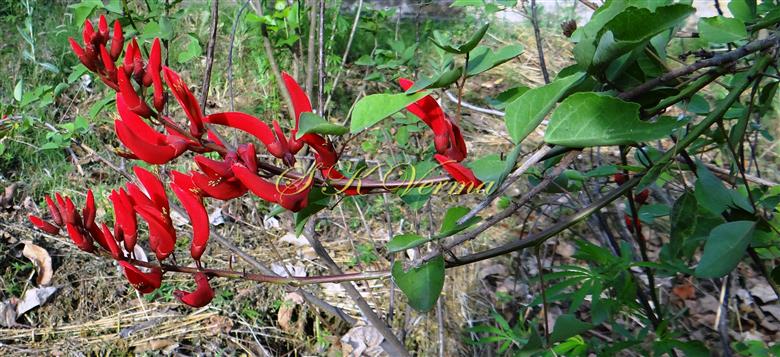
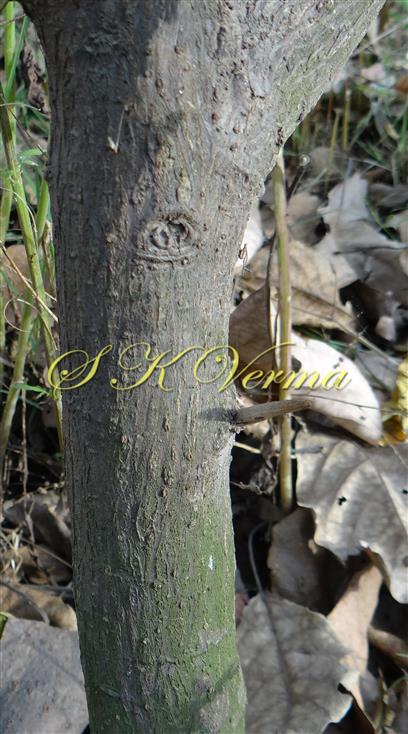
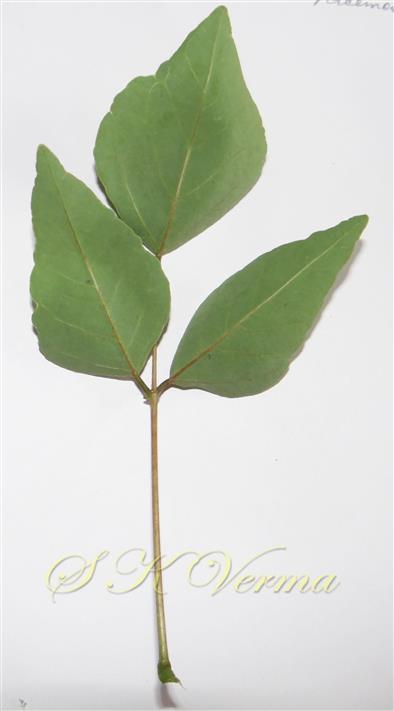
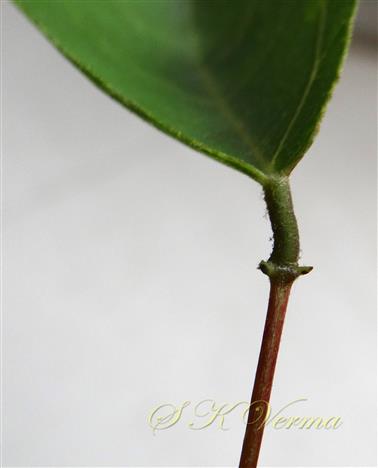
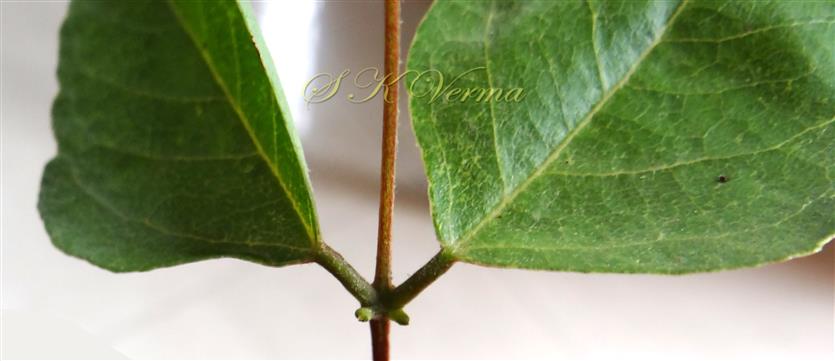
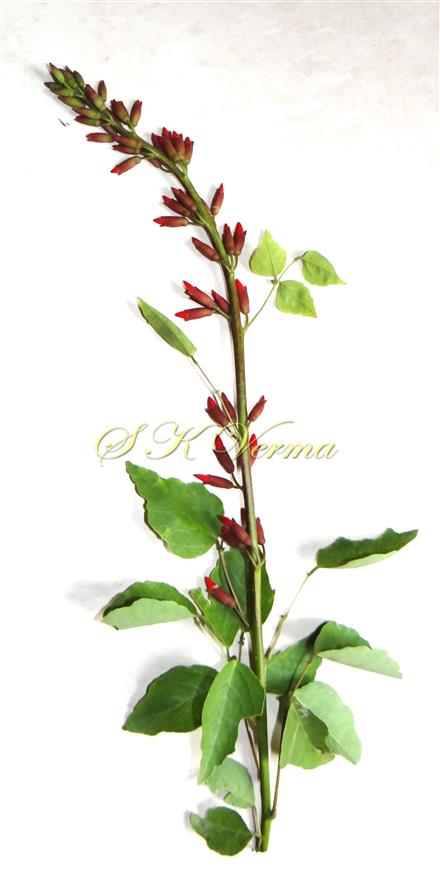
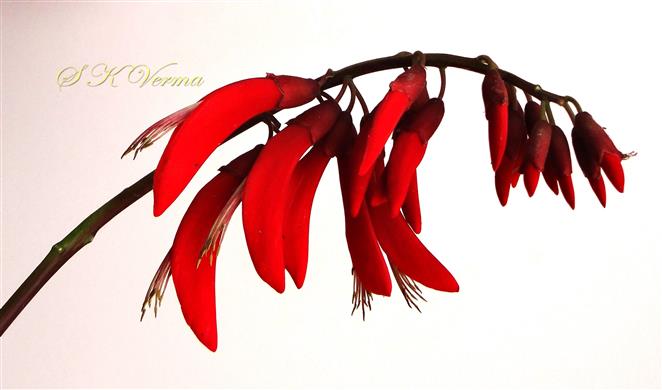
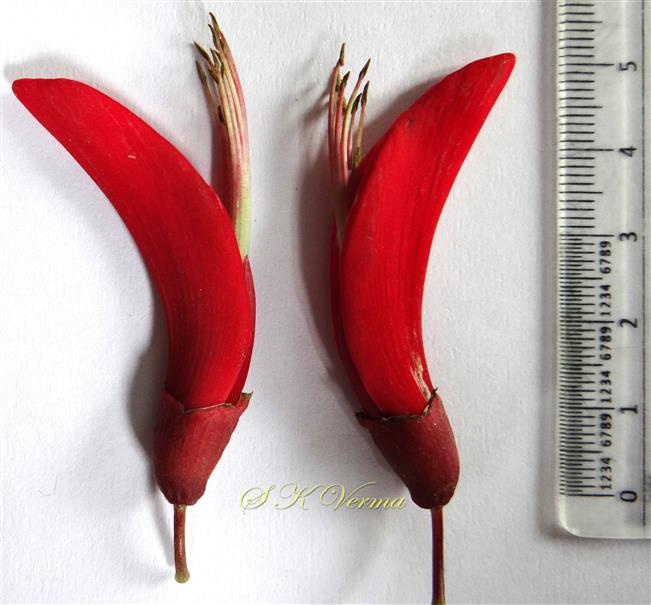
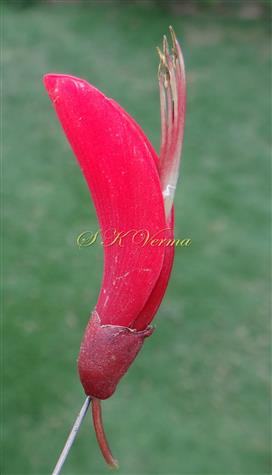
.jpg)
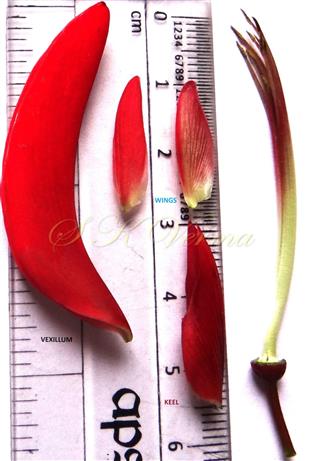
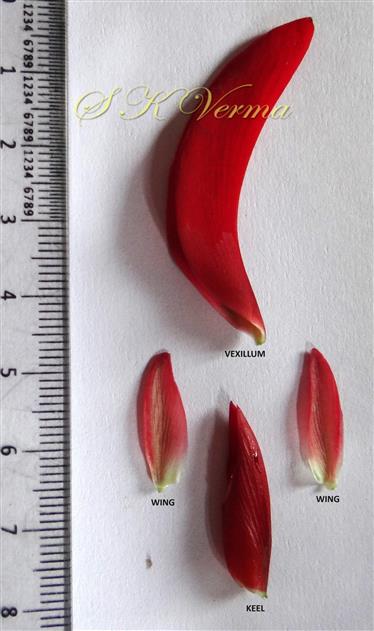











.jpg)


